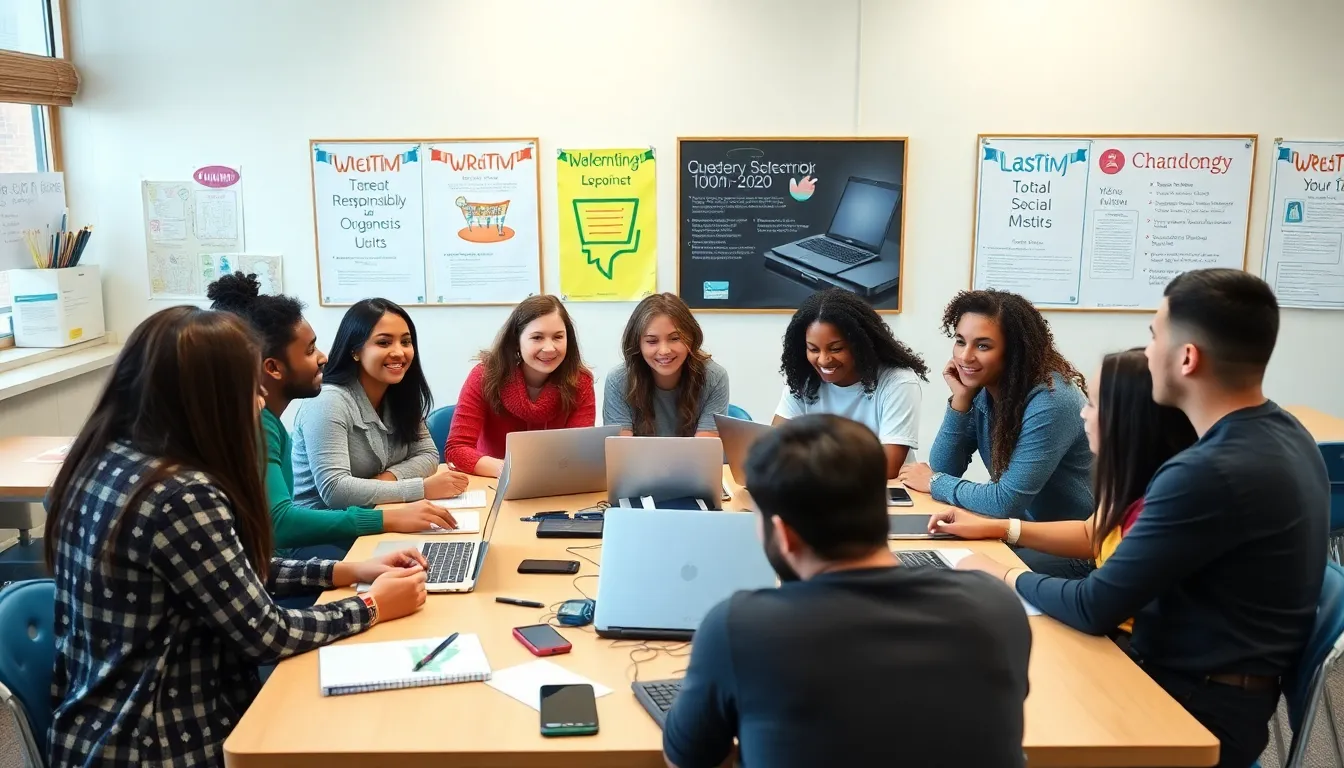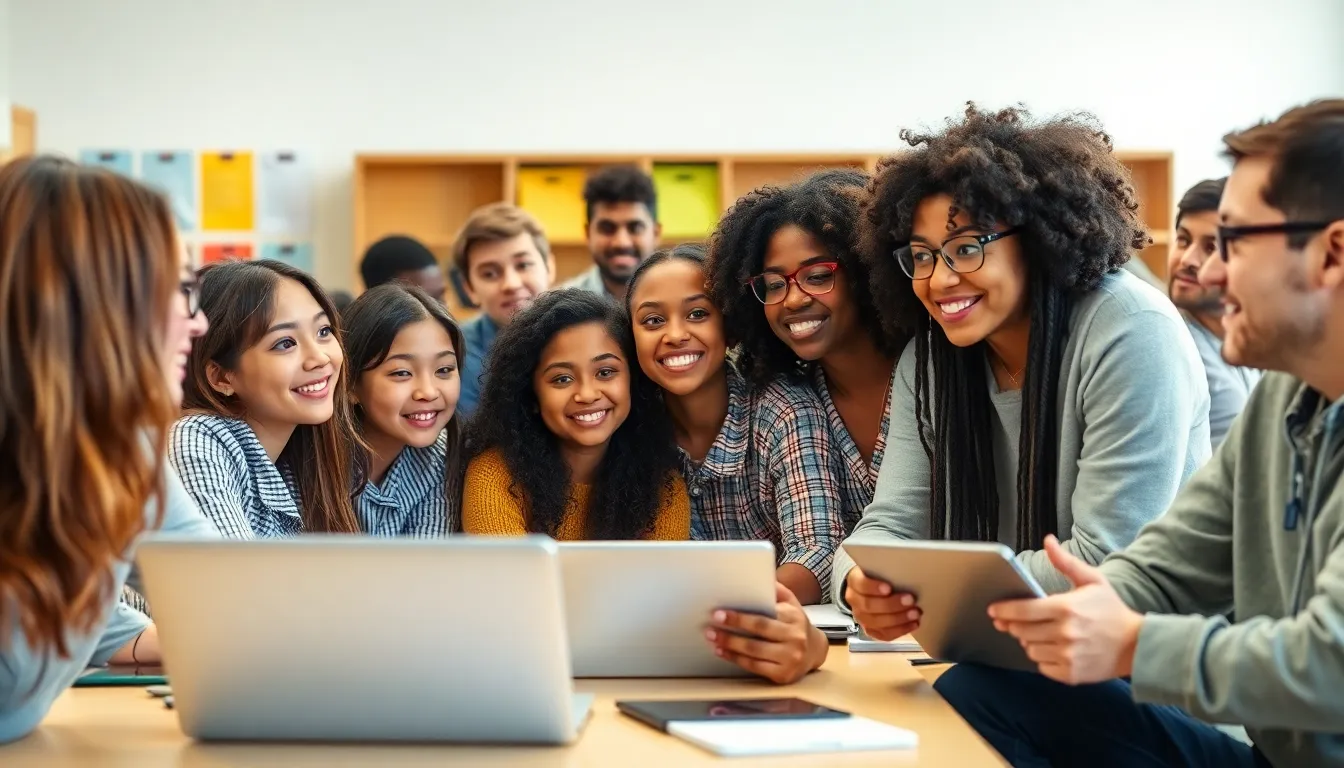Social Media Literacy: Master the Skills to Combat Misinformation and Engage Responsibly
In a world where everyone seems to have a smartphone glued to their hand, social media literacy isn’t just a nice-to-have—it’s a must. With memes flying faster than a cat video can go viral, understanding how to navigate this digital jungle is crucial. It’s not just about posting the perfect selfie; it’s about knowing what to share, when to share it, and how to avoid the pitfalls of misinformation. Imagine scrolling through your feed and spotting a post that’s so outrageous it makes you question your sanity. Without social media literacy, you might just hit that share button faster than you can say “fake news.” By mastering the art of discerning fact from fiction, anyone can become a savvy social media user—armed with the skills to engage, inform, and entertain without falling into the traps that lurk in the shadows of the internet.
Social Media Literacy
Social media literacy encompasses the skills needed to navigate digital platforms effectively. It involves discernment in evaluating content to foster informed engagement.Definition and Importance
Social media literacy refers to the ability to access, analyze, evaluate, and create content on social media. It plays a critical role in today’s information-rich environment. Those skilled in social media literacy can identify credible sources, reducing the likelihood of sharing misinformation. Furthermore, understanding the nuances of online communication fosters responsible participation. Engaging with diverse perspectives and cultures becomes more effective with social media literacy. People can develop their critical thinking by interpreting messages more accurately, ultimately leading to informed discourse.Key Components of Social Media Literacy
Several key components contribute to effective social media literacy. Evaluating credibility involves assessing the reliability of sources before sharing content. Understanding context helps users grasp the intent behind posts, which aids in accurate interpretation. Recognizing bias also empowers individuals to identify slanted perspectives, promoting balanced viewpoints. Participating ethically ensures that users engage respectfully and mindfully with others. Creating responsible content encourages the dissemination of factual information, enhancing the online landscape. Together, these components provide the foundation for becoming proficient in social media use.The Role of Education in Social Media Literacy

Incorporating Social Media Education in Schools
Introducing social media education in schools promotes critical thinking and responsible online behavior. Curricula can include lessons on identifying misinformation, evaluating sources, and understanding the implications of sharing content. Engaging activities like group discussions and projects enable students to analyze real-world examples. Teachers can create a safe space for students to practice these skills, equipping them with tools to navigate the digital landscape effectively. Schools that prioritize social media literacy contribute to the development of informed, responsible digital citizens.Training for Educators and Parents
Training programs for educators and parents ensure they possess the knowledge to guide students in social media literacy. Workshops can cover essential topics like recognizing bias, fostering digital citizenship, and addressing online safety. Equipping both teachers and parents empowers them to model responsible social media use. Parents can engage in conversations about their child’s online experiences, reinforcing lessons learned at school. Collaborative efforts between educators and parents create a supportive environment that nurtures critical thinking about social media among young users.Evaluating Information on Social Media
Evaluating information on social media requires users to become adept at recognizing credible sources and spotting misinformation.Identifying Fake News and Misinformation
Identifying fake news relies on checking the source’s credibility. Investigating the author’s credentials can reveal whether the information is trustworthy. Users should also examine the date of publication; outdated articles might not reflect current events. Fact-checking websites, like Snopes or FactCheck.org, offer reliable verification methods. Engaging critically with headlines helps; sensational headlines often mask inaccurate content. Observing language cues, such as excessive emotional appeals, can also indicate bias or misinformation.Critical Thinking Skills for Users
Critical thinking skills empower users to navigate complex information ecosystems. Evaluating arguments requires distinguishing between facts and opinions. Recognizing biases in content promotes balanced understanding. Users should practice asking questions about the information’s origin, purpose, and audience. Comparing multiple sources enhances perspective and provides a fuller picture. Discussing findings with peers can expose gaps in understanding and encourage deeper analysis. Practicing these skills consistently cultivates responsible social media engagement.Strategies to Enhance Social Media Literacy
Social media literacy enhances informed engagement. Implementing effective strategies cultivates skills for responsible online interactions.Best Practices for Responsible Engagement
Establishing clear guidelines helps maintain integrity. Always verify information before sharing posts. Engaging thoughtfully with content builds trust in online communities. Prioritize respectful dialogue, particularly when discussing sensitive topics. Cultivating a habit of empathy enhances understanding of diverse perspectives. Monitor the impact of one’s online presence on others. Consistently reflect on personal motivations for sharing media. Finally, encourage others to join in fostering a healthy social media environment.
Prioritize respectful dialogue, particularly when discussing sensitive topics. Cultivating a habit of empathy enhances understanding of diverse perspectives. Monitor the impact of one’s online presence on others. Consistently reflect on personal motivations for sharing media. Finally, encourage others to join in fostering a healthy social media environment.





